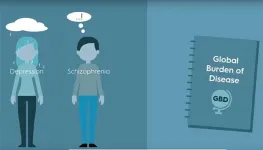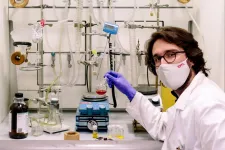Mechanical clot-removal or endovascular therapy is a non-surgical treatment that uses tiny tubes, or catheters, to remove a blood clot. In 2015, several major clinical trials confirmed that endovascular therapy effectively treated stroke caused by a blockage in a large blood vessel (ischemic stroke). In 2018, the American Heart Association's stroke treatment guidelines were updated to recommend endovascular therapy to improve the odds that certain stroke patients could have functional recovery. However, previous research has indicated members of some under-represented racial/ethnic groups are less likely to receive recommended treatments such as endovascular therapy.
This study compared the use of endovascular therapy and post-stroke recovery among patients of different races/ethnicities before and after 2015. Between April 2012 and June 2019, investigators also reviewed data in the American Heart Association's Get With The Guidelines®- Stroke program, which includes a large, database of information about stroke treatment at hospitals across the U.S. Since 2003, over 2,000 hospitals have entered more than 5 million patient records into the program's database.
Researchers found:
Overall, 14% of 302,965 potentially eligible patients received endovascular therapy and, in all groups, endovascular therapy increased over the course of the study. However, Black patients were 32% less likely to receive endovascular therapy before 2015 and still 17% less likely to receive it after 2015 when compared to non-Hispanic white patients. Differences also emerged related to stroke recovery. In terms of short-term outcomes, patients from under-represented racial and ethnic groups fared better than non-Hispanic white patients. In addition, Black, Hispanic and Asian patients were more likely to return home and less likely to die while hospitalized or to be discharged to hospice care. Three months later, however, Black patients were 16% less likely and Asian patients were 30% less likely to be able to function independently, compared to non-Hispanic white patients. "It is reassuring that the treatment gap for Black patients has narrowed since 2015, yet it remains significant and is concerning. The most surprising finding was the discrepancy between short- and long-term outcomes in non-Hispanic white patients versus the patients in other race and ethnicity groups," said study lead author Faheem G. Sheriff, M.D., assistant professor of neurology at Texas Tech University Health Science Center of El Paso, Texas. "There is a lot of work that remains in terms of figuring out the root causes for these differences and how best to improve equitable access and care for all patients."
Sheriff continued, "Once these root causes are identified, we can focus on formulating an action plan to reduce these differences, for both access to endovascular therapy and recovery afterwards, particularly post-discharge care."
INFORMATION:
According to the American Heart Association's Heart Disease and Stroke Statistics -- 2021 Update, when considered separately from other cardiovascular disease, stroke ranks No. 5 among all causes of death in the U.S., causing 147,810 deaths in 2018. Stroke occurs when a blood vessel to or in the brain either becomes blocked or bursts, preventing blood and oxygen from reaching all of the brain. Treatment to quickly restore blood flow to the brain is essential to improve outcomes and survival.
To recognize stroke symptoms requiring immediate treatment, the American Stroke Association recommends everyone remember the acronym F.A.S.T. for face drooping, arm weakness, speech difficulty, time to call 9-1-1. Fortunately, most strokes are preventable through healthy lifestyle choices: not smoking; eating healthy foods; being physically active; maintaining a healthy body weight; and controlling high blood sugar, cholesterol and blood pressure.
Co-authors are Haolin Xu, M.S.; Alberto Maud, M.D.; Vikas Gupta, M.B.B.S., M.S.; Anantha Vellipuram, M.D.; Gregg C. Fonarow, M.D.; Roland A. Matsouaka, Ph.D.; Ying Xian, M.D.; Mathew Reeves, B.V.Sc., Ph.D.; Eric E. Smith, M.D., M.P.H.; Jeff Saver, M.D., Gustavo Rodriguez, M.D., Ph.D.; Salvador Cruz-Flores, M.D., M.P.H.; and Lee H. Schwamm, M.D. The list of author disclosures is available in the abstract.
The study was funded by the Get With The Guidelines®- Stroke initiative of the American Heart Association/American Stroke Association.
Additional Resources:
Multimedia is available on the right column of release link:
https://newsroom.heart.org/news/more-stroke-patients-receiving-mechanical-clot-removal-yet-racial-disparities-persist?preview=d8fae7c2d51ccb1cd54755f2e7a615d8
Size and time impact outcomes when mechanical clot removal used for large core strokes
Mechanical clot removal without clot busters may be sufficient stroke treatment
Clot removal beyond normal treatment time, still improved quality of life after stroke
For more news at ASA International Stroke Conference 2021, follow us on Twitter @HeartNews #ISC21.
Statements and conclusions of studies that are presented at the American Heart Association's scientific meetings are solely those of the study authors and do not necessarily reflect the Association's policy or position. The Association makes no representation or guarantee as to their accuracy or reliability. The Association receives funding primarily from individuals; foundations and corporations (including pharmaceutical, device manufacturers and other companies) also make donations and fund specific Association programs and events. The Association has strict policies to prevent these relationships from influencing the science content. Revenues from pharmaceutical and biotech companies, device manufacturers and health insurance providers are available here, and the Association's overall financial information is available here.
The American Stroke Association's International Stroke Conference (ISC) is the world's premier meeting dedicated to the science and treatment of cerebrovascular disease. ISC 2021 is virtual, March 17-19, 2021. This 3-day conference features more than 1,200 compelling presentations in 21 categories that emphasize basic, clinical and translational sciences as they evolve toward a better understanding of stroke pathophysiology with the goal of developing more effective therapies. Engage in the International Stroke Conference on social media via #ISC21.
About the American Stroke Association
The American Stroke Association is devoted to saving people from stroke -- the No. 2 cause of death in the world and a leading cause of serious disability. We team with millions of volunteers to fund innovative research, fight for stronger public health policies and provide lifesaving tools and information to prevent and treat stroke. The Dallas-based association officially launched in 1998 as a division of the American Heart Association. To learn more or to get involved, call 1-888-4STROKE or visit stroke.org. Follow us on Facebook, Twitter.


